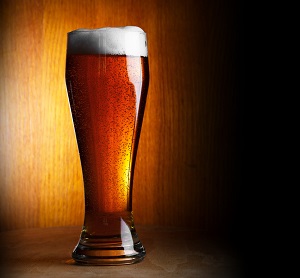Small Business Innovation Research on the Road
By Paul Shapiro

EPA’s Paul Shapiro with SBIR representatives from other federal agencies at the University of South Dakota’s SBIR Center.
Working on EPA’s Small Business Innovation Research (SBIR) program, I feel like I am part of something that is quintessentially American. Americans are known for using their ingenuity to solve important problems and for developing innovative technologies to do so. Whether in agriculture, industry, defense, space, or the environment, Americans have created small businesses to put such technologies into practice.
But starting a successful technology company is challenging. The SBIR program is a great resource for innovators. It gives them funds—with no strings attached—to move their technologies through the early stages of development and into commercialization.
I recently participated in an SBIR bus tour with representatives from the ten other federal agencies that have SBIR programs. We went across the Mid-West to get the word out about SBIR. I felt like I was doing something else that is part of American lore—prospecting. Yes, mining for golden nuggets of inventiveness and diamond gems of business acumen. Last year’s Road Tour was a success—I connected with people who ended up proposing projects to our program. So this year I again went to spread the word about SBIR to states from which we have not had many SBIR proposals.
In Grand Forks, ND, Sioux Falls, SD, Ames, IA, St. Louis, MO, and Indianapolis, IN, I got a chance to present EPA’s SBIR program and talk one-on-one with people about their technologies. I told them we want high-risk, high-reward projects that can “disrupt” the marketplace by providing better performing, safer, and less costly technologies than those that are currently being used. To make the risk manageable, however, we evaluate proposed projects equally on commercial and technical soundness. I told them that their success will be our success, since they will help us achieve our mission of protecting human health and the environment.
Since start-ups need all the support they can get, another thing I find inspiring on these trips is meeting the dedicated people in the state agencies, universities, entrepreneurial centers, and consulting firms who host these events and provide supportive services all year long to the innovators in their area.
It was great hearing entrepreneurs describe their ideas and so rewarding to help them see new opportunities—like the person I approached on one of the tour stops. He got up in the larger group to describe a material with remarkable properties he developed for defense purposes. I showed him that we have an environmental topic in our 2016 solicitation that would be a great fit for his technology. One more nugget for our program!
The timing of this tour was brilliant, because our annual Phase I solicitation just opened and will remain open until Oct. 20, 2016. To propose a project, go to the EPA SBIR page.
About the Author: Paul Shapiro is a Senior Environmental Engineer with the EPA Small Business Innovation Research (SBIR) Program. He has worked for many years on the development and commercialization of innovative environmental technologies. He has helped solve a wide range of environmental problems, usually in collaboration with public and private sector stakeholders.















